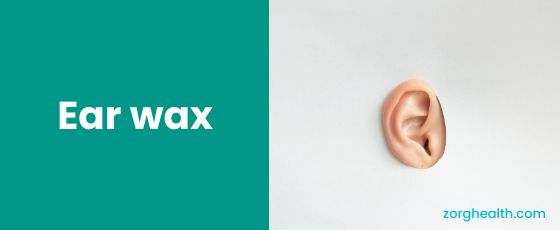Wax is important for your ears!! Know about Ear Wax

Our ears are divided into three zones, outer ear, middle ear, and inner ear. What we see (pinna and ear canal) are parts of our outer ear. Which is separated from the middle ear by the eardrum (tympanic membrane). The ear canal is the part where wax builds up. The ear canal is further divided into outer 1/3 rd and inner 2/3 rd, outer 1/3 rd is soft and cartilaginous and has hair follicles and glands responsible for secreting substances which become wax after getting mixed with foreign particles and dust and dead skin cells. The color of wax may vary from light yellow to dark brown.
It helps as a necessary coating at the entry of the ear canal protecting our ears from dust bacteria and other small insects/fly and also acting as a water repellent and most importantly providing nourishment and moisture to the skin.
Normally this wax gets cleared off due to natural factors like the skin growing from inside to outside, jaw joint movements that push wax out, and sometimes falling out on its own when they dry up. This is possible only when the wax is confined to outer 1/3 rd, but if due to any factor it reaches a deeper canal it causes blockage.
Excessive ear wax buildup
This normal cycle of wax building up and clearing off can get affected by factors like-
1. Cleaning of the ear with cloth/finger/earbuds- it actually just pushes the wax deep into the ear.
2. Comparatively smaller ear canal- making it prone for the wax to get stuck.
3. Excessive wax production- some people are more prone to secrete more wax.
4. Earphones/ earplugs/ hearing aids– tight-fitting of which pushes the wax deep into the canal.
5. People with the too hairy ear canal.
6. Certain skin conditions like eczema.
Signs and symptoms suggestive of ear wax buildup or blocked in the ear canal
1. Sudden onset hearing difficulty which can be continuous or intermittent
2. Ringing/ buzzing into ears (tinnitus).
3. Feeling of pressure, pain, or fullness in the ear.
4. Coughing, due to pressure on the ear canal.
5. Constant itching.
Long-standing blockage can lead to ear infections and irritation. Consult an ENT specialist if you experience ear pain, ear discharge, or dizziness.
Ear Wax in Children
Ear wax is produced in children as well. If a child is sticking a finger or other objects in the ear it may be a wax blockage or you may observe and may feel to clean it or remove it, but the skin of the ear the canal is very delicate in children and one can easily damage it while cleaning, so it is better to consult pediatrician or ENT specialist.
What to do when waxing builds-up
1. Wax softeners drop –
There are OTC (over the counter), oil-based drops that can soften and break down the wax. You can put these drops and observe for a few days. You can use warm olive oil or glycerin drops too. Before using these drops make sure you don’t have a punctured eardrum as you may develop a middle ear infection then, also note that sometimes drops can make your ears feel more blocked (as they swell up the wax).
2. Ear irrigation-
Most important is to note that one should not try this if there is any pain or injury or a history of ear discharge (due to a ruptured eardrum). You can irritate your ear yourself- sit or stand in front of a mirror. Hold your pinna and pull it outward and forward (to make the tortuous ear canal straight). Then direct the tip of the syringe back and up and start irrigating gently with constant pressure with warm water or saline. It is advised to try this after using wax softeners for a few days.
3. Suction or pressure irrigation-
Visit a nearby ENT practitioner, your doctor may use, irrigation/suction or probe instruments to remove wax.
How can you avoid wax build-up?
1. Avoid cleaning your ear with fingers/clothes or earbuds as they only result in pushing it further inside.
2. Don’t use tight-fitting earphones/ buds/ earplugs for too long.
3. Don’t be in a too humid environment. Excessive sweating can also make you prone to build-up
more wax.
Complication of Earwax
Rarely impacted wax may give rise to a condition called “keratosis obturans” in which it can eat up the skin and bone resulting in severe ear pain and widening of the ear canal and much more severe complications like labyrinthine fistula, temporomandibular joint disorder, or even facial nerve paralysis.
